In the Devices view, you find all relevant data information about existent devices in your environment - both on an overview and a device-specific detail level (also see chapter Details view ). The Devices view includes three main tabs: All Devices, Automation and Troubleshooting.
All devices
The All devices tab leads you to a complete list of devices (machines and servers) which are available in your environment. It is one of the central views because you are assigned to it in many operations.This view In this view, you can perform the following actions:
•adding a new device,
•removing a device,
•importing files or scripts,
•inspecting device specifications in the Details view, e.g. installed software packages, device-specific hardware and services, assigned ports,
•starting a device scan in the Details view, either Manually or via Device Discovery option, in case you need to inspect a specific device,
•schedule discovery and inventory runs via the Scheduler.
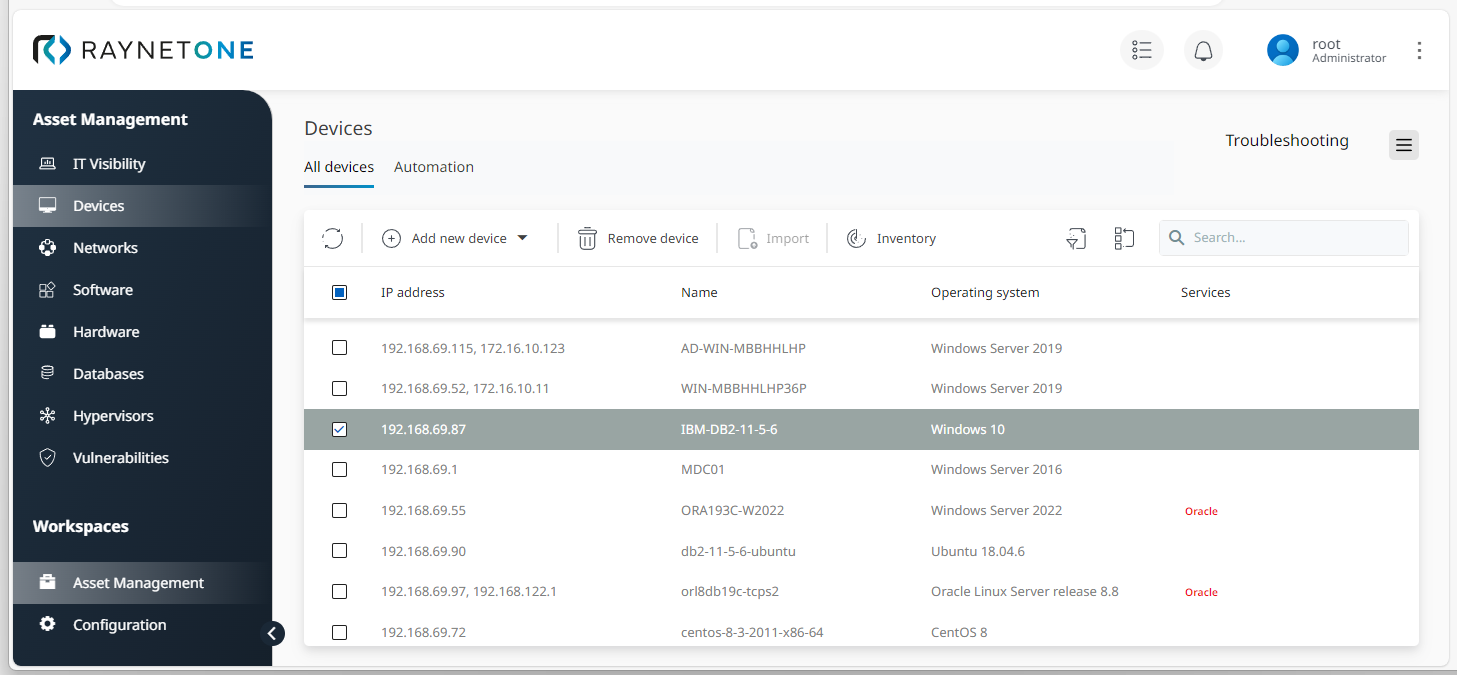
Under the All Devices tab, you find a complete overview of all devices within your managed environment.In order to inspect a specific device, you need to select it by click.
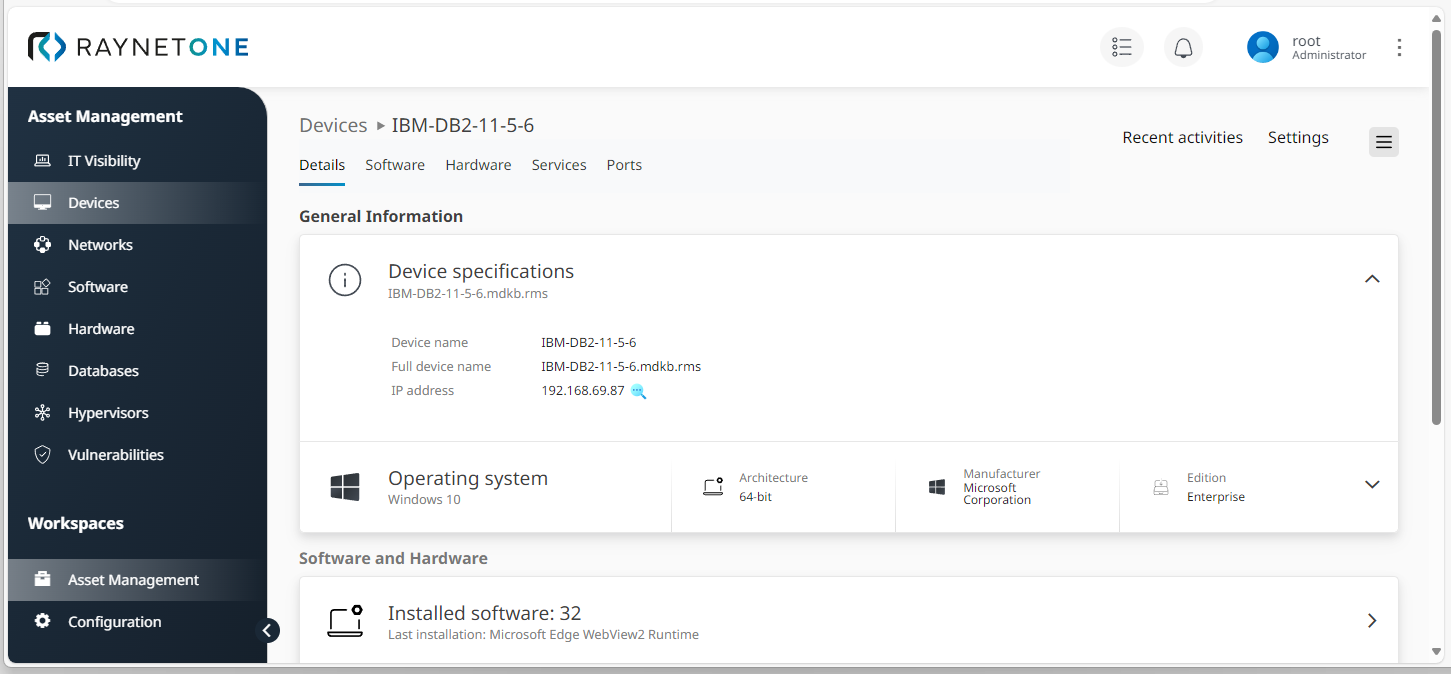
In the Details view, you get deeper insights into the specifications of a selected device. From this point, you can access detailed information on installed software, hardware versions and features, related services and ports used by the device.
Automation
Generally, you can add, remove, adjust and view device schedules under the Automation tab, e.g. for inventory runs as a recurring operation. This view is available in two modes: Simple mode and Expert mode.
In the Simple mode, you can add schedules for automated discovery and inventory runs via an adjustable calendar view.
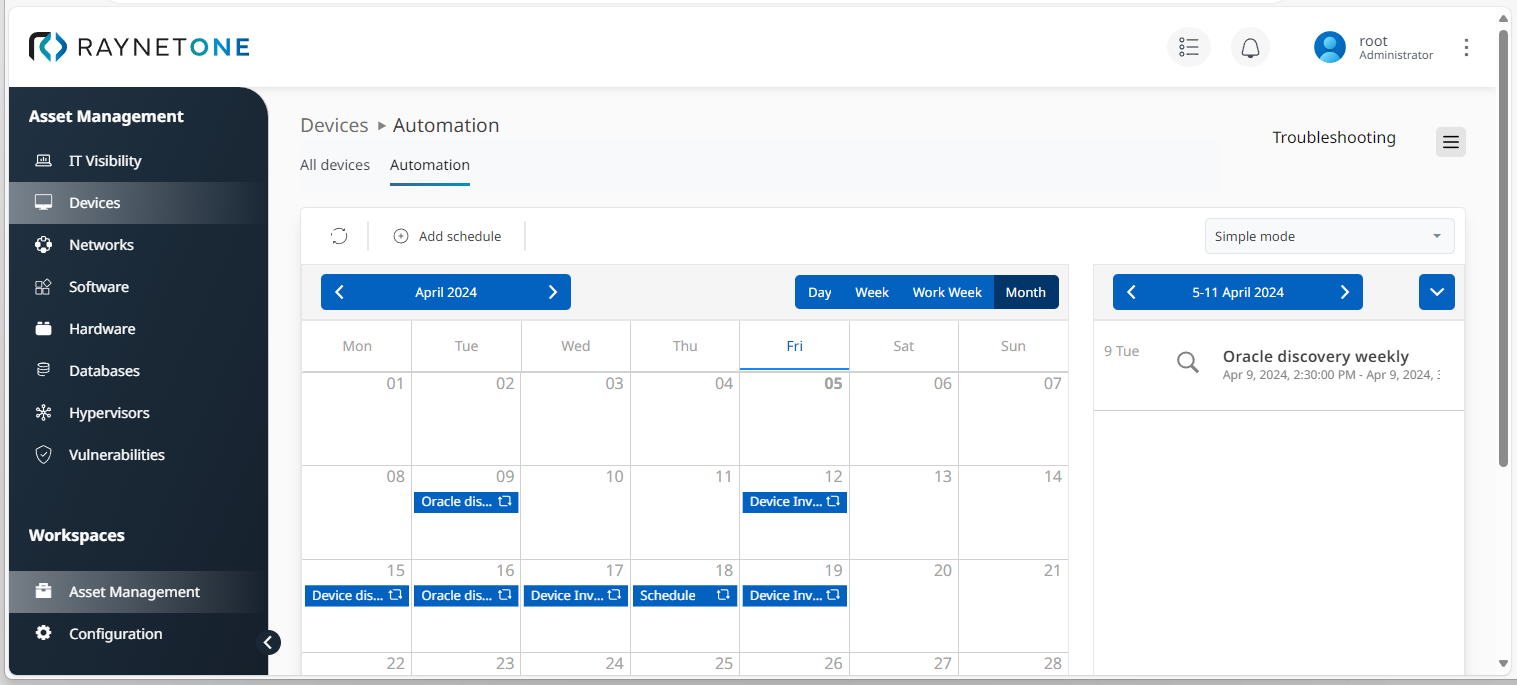
The Expert Mode view displays all scheduled discovery and inventory tasks as interactive and adjustable list entries.
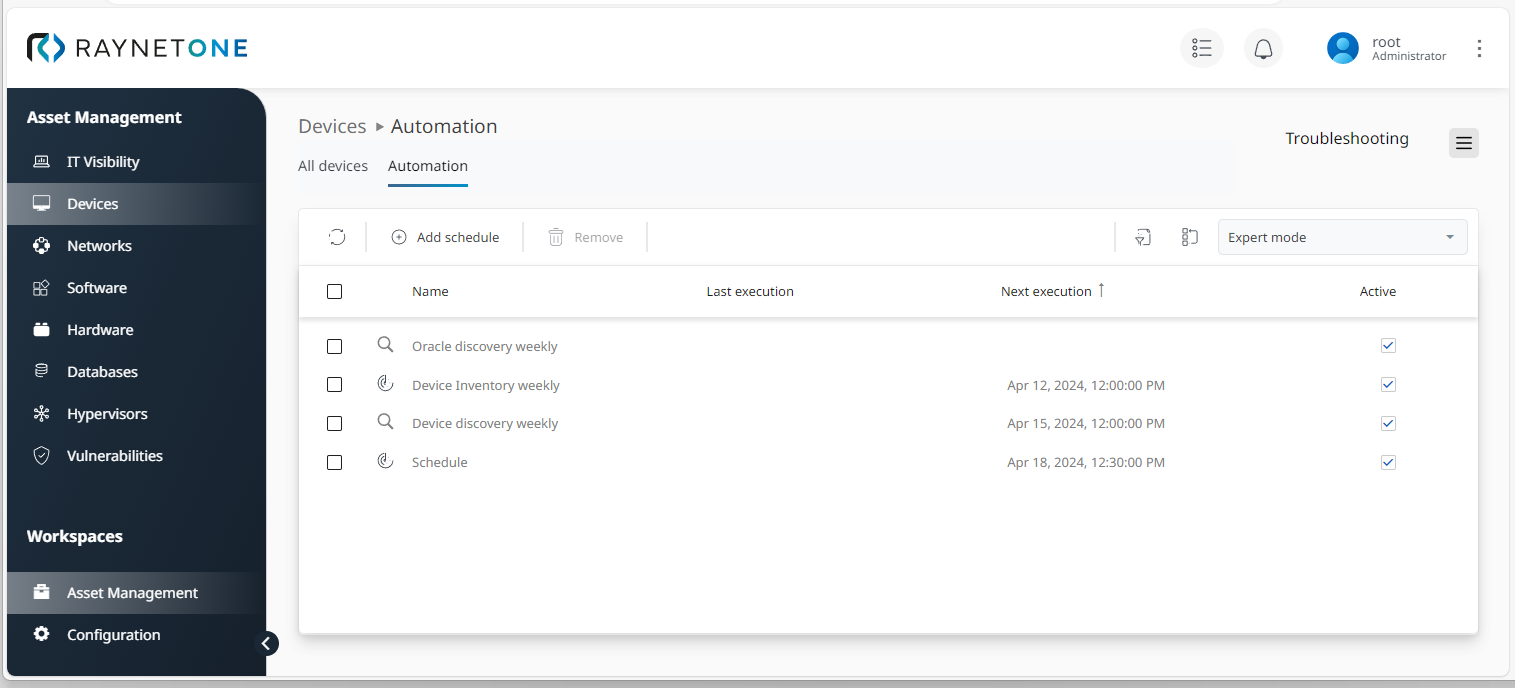
Troubleshooting
The Troubleshooting view displays a list of devices which inventory runs failed on. There are many issues which can lead to failed operations, e.g. missing or invalid credentials on devices and defective or otherwise inaccessible devices.However, Troubleshooting enables you to detect and eliminate potential error sources on failed devices or instruments. In the Details view, you can perform the following actions:
•viewing failed inventory reports and skipped instruments,
•view device-specific inventory failure reports in the Details view,
•start a new inventory run (also possible directly via Inventory tab in the toolbar),
•view inventory run details.
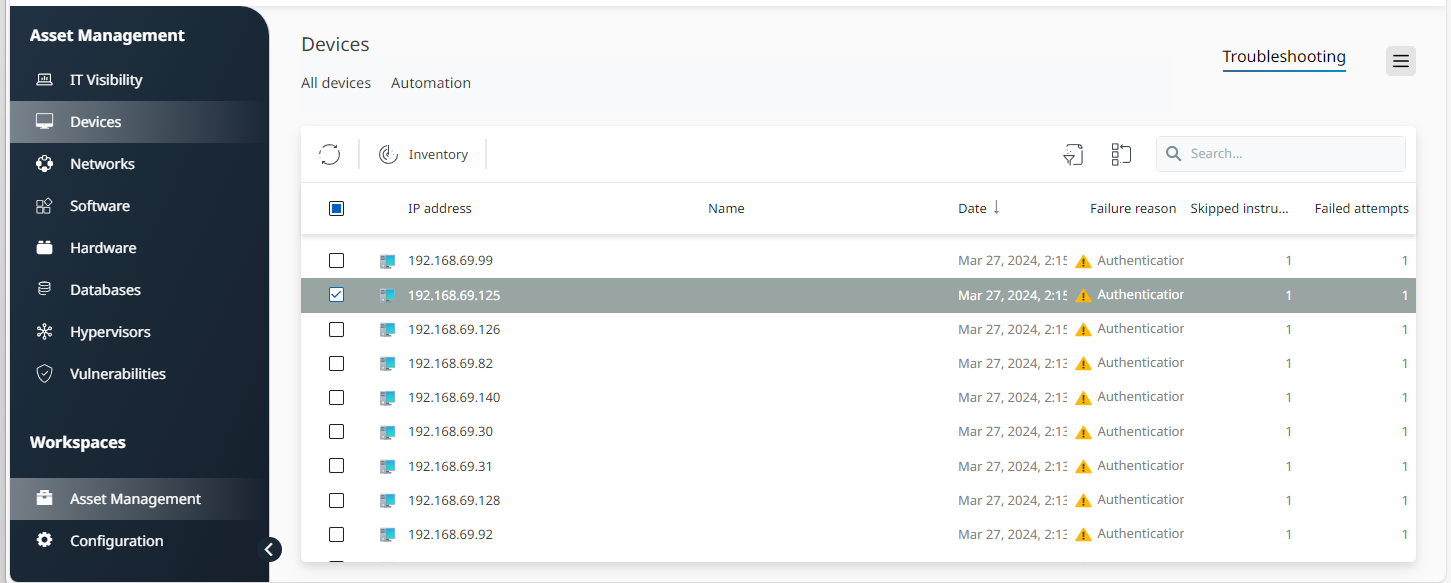
The view under the Troubleshooting tab displays a complete list of devices which inventory runs or other automated operations failed on. For deeper insights, you can select listed device by click to get into the details view.
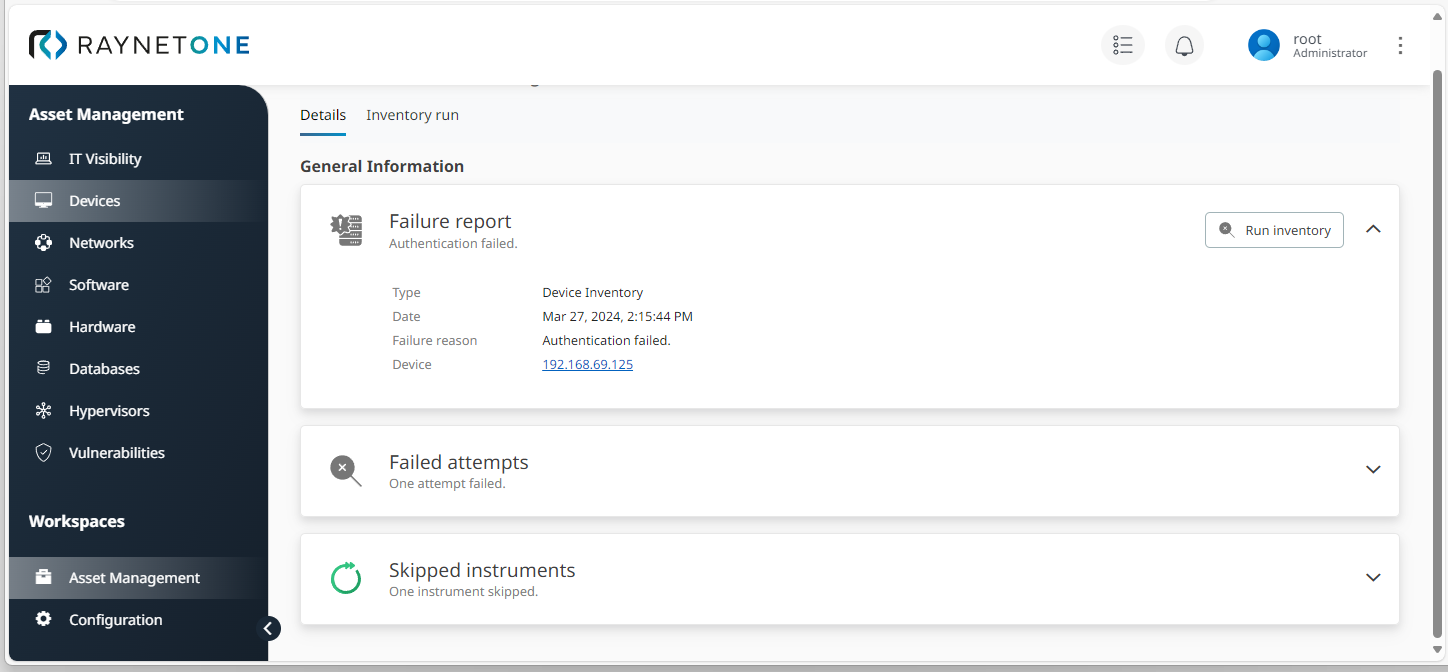
In the device details view under Troubleshooting, you can inspect individual devices which caused failure.This view includes two tabs: Details and Inventory run.Under the Details tab, you can detect device-specific error sources.
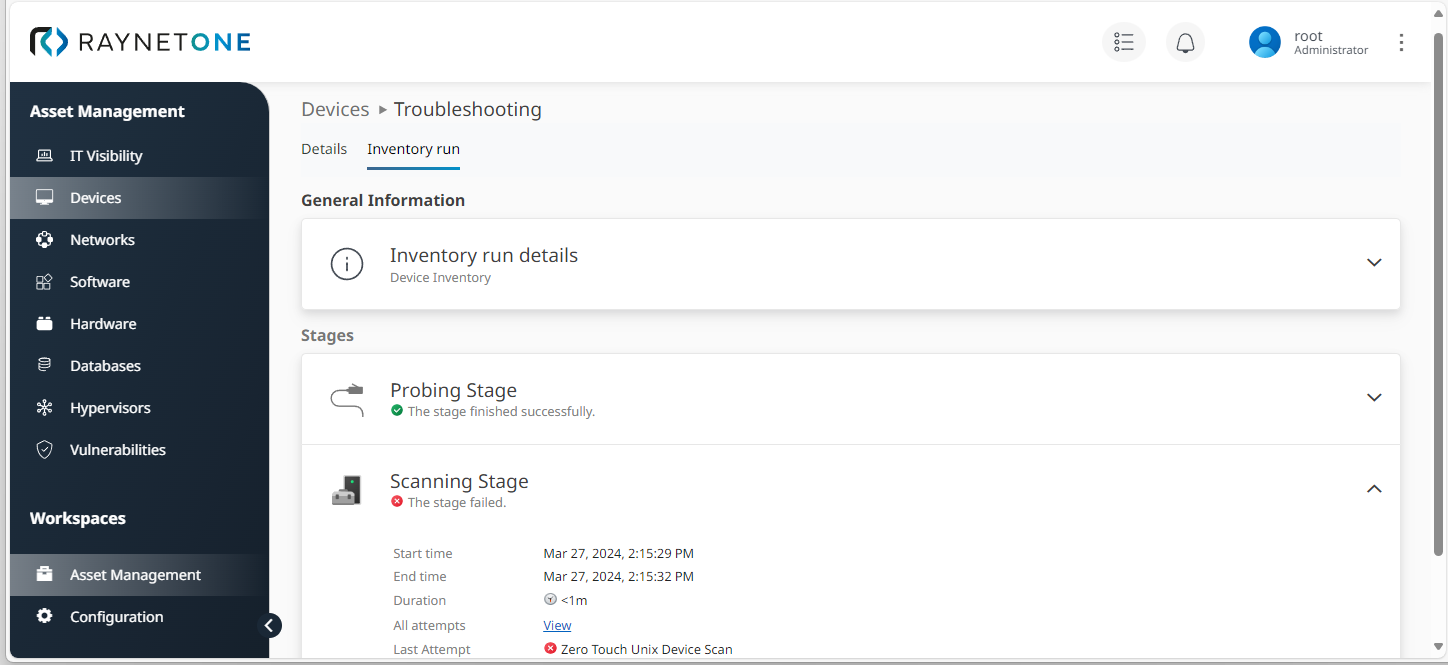
The view under Inventory run presents details on specific inventory runs which failed on the device in question.
|
Note: |